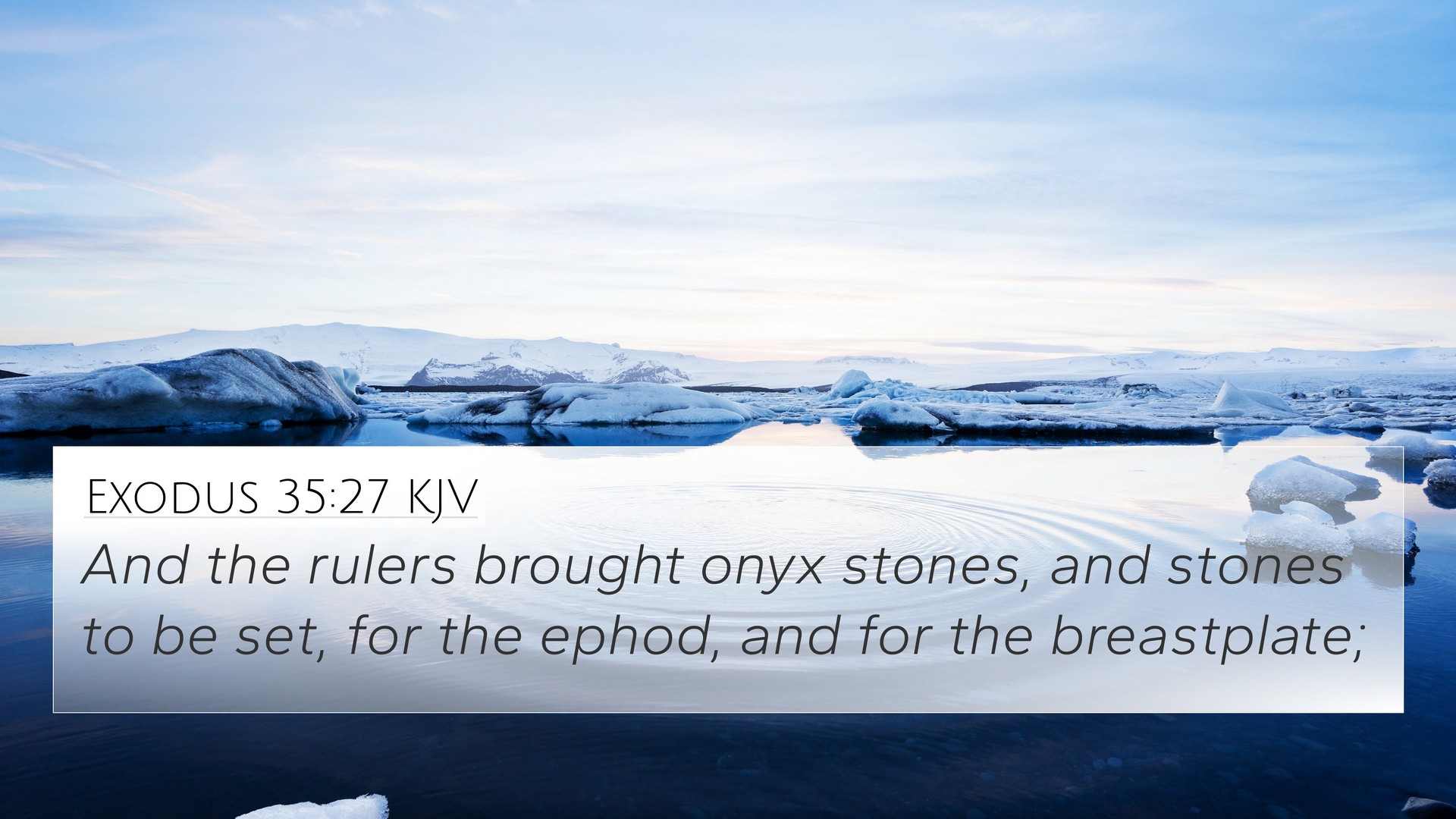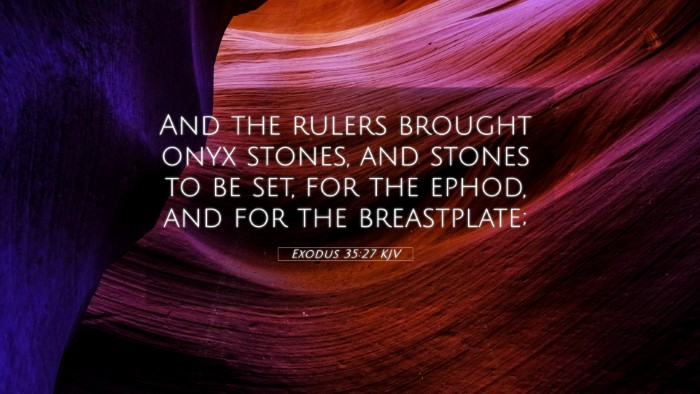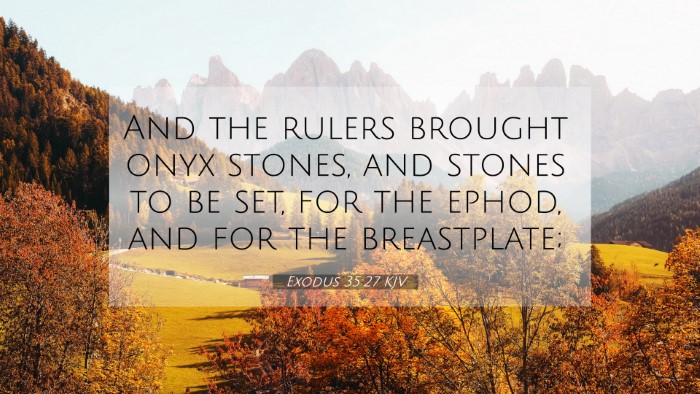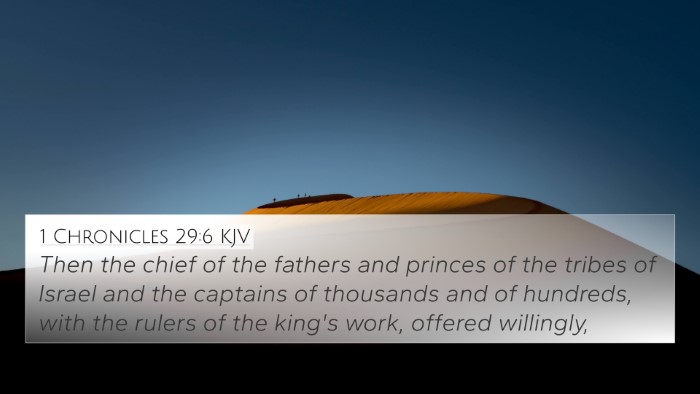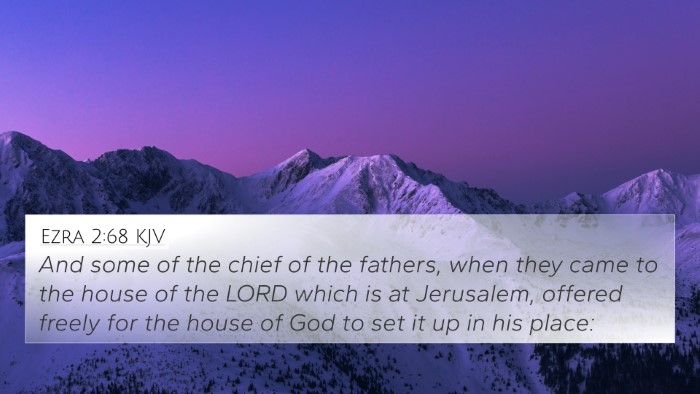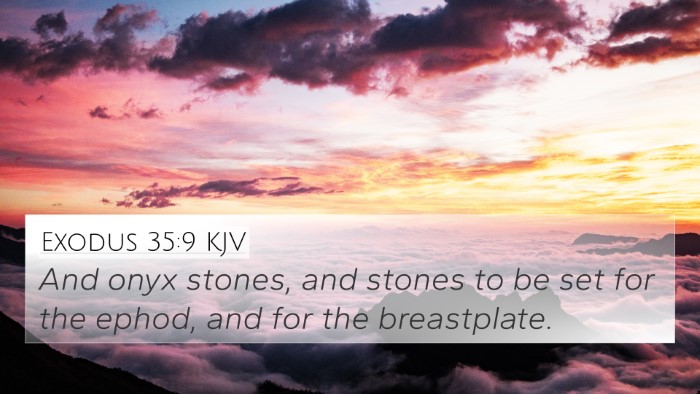Exodus 35:27 - Summary and Commentary
Exodus 35:27 reads: "And the rulers brought onyx stones and stones to be set for the ephod, and for the breastplate." This verse stands out as it highlights the contributions made by the leaders of the Israelites for the construction of the Tabernacle. It underscores themes of voluntary giving and the importance of communal contributions in fulfilling divine commands.
Meaning of Exodus 35:27
This verse emphasizes several key themes, which can be further understood by consulting various public domain commentaries:
- Matthew Henry's Commentary:
Henry emphasizes the spirit of generosity and leadership displayed by the rulers of Israel. He notes that their contributions were not merely material but symbolic of their commitment to God’s service. Such actions reflect a deeper principle of willing hearts engaging in divine tasks.
- Albert Barnes' Notes:
Barnes highlights that the onyx stones and other precious materials were essential for the priestly garments, which represented holiness and service to God. He adds that these offerings were essential in building a sanctuary that God desired among His people.
- Adam Clarke's Commentary:
Clarke elaborates on the significance of the ephod and breastplate, noting that they were integral to the High Priest's attire, linking them with the responsibilities carried by the priesthood in mediating between God and the people. Clarke indicates that the rulers' gifts symbolize a commendable dedication to God’s requirements.
Connections Between Bible Verses
Exodus 35:27 can be deeply analyzed in relation to several other scriptures:
- Exodus 28:2-3: God commands the making of garments for the priests, establishing the importance of the ephod and breastplate.
- 1 Chronicles 29:3-9: This passage describes similar acts of generosity when David collected materials for the Temple, demonstrating a theme of communal support.
- Matthew 5:14: Jesus spoke of believers as ‘the light of the world,’ parallel to the Israelites’ role in bringing God’s presence to the world through their obedience and offerings.
- Philippians 4:18: Paul's acknowledgement of gifts parallels the offerings in Exodus, reinforcing the principle of sacrificial giving in service to God's work.
- 2 Corinthians 9:7: This verse emphasizes the importance of cheerful giving, connecting to the willing spirit of the rulers in Exodus.
- Hebrews 8:5: Discusses the shadow of the heavenly things as represented by the Levitical priesthood, linking the significance of the ephod.
- Revelation 21:19-20: Speaks of precious stones, similar to those used in the ephod, showcasing God’s glory and the fulfillment of His promises through His people.
- 1 Peter 2:9: Relates to the concept of believers as a royal priesthood, serving a purpose similar to that of the priests represented in Exodus.
- Isaiah 61:10: Reflects on the concept of being clothed in righteousness and praise, akin to the attire created for the high priests.
Thematic Connections
The themes of this verse connect to broader Biblical principles such as:
- Leadership in Service: The rulers' contributions set an example of leading by serving, as seen in other scriptural contexts.
- Community and Giving: The act of communal contributions illustrates the collective responsibility of believers to support God's work.
- Holiness in Worship: The onyx stones symbolize beauty and worth in worship, emphasizing the need for presentable offerings.
Conclusion
In conclusion, Exodus 35:27 is a verse rich with significance on voluntary contributions to the divine cause, highlighting leadership, community, and holiness in worship. The connections drawn between various verses aid in forming a comprehensive understanding of this scripture's place within the narrative of God's covenant with Israel and its implications for believers today.
Tools for Further Study
For those interested in deepening their understanding of the connections between Bible verses, consider using:
- Bible concordance for quick referencing of terms and themes.
- Cross-reference Bible study tools to discover related scriptures.
- Study guides on inter-Biblical dialogue for understanding thematic connections.
- Bible chain reference materials to trace relationships between verses.
